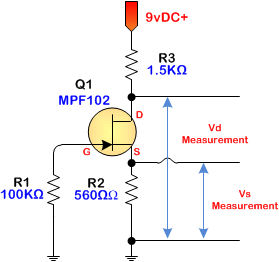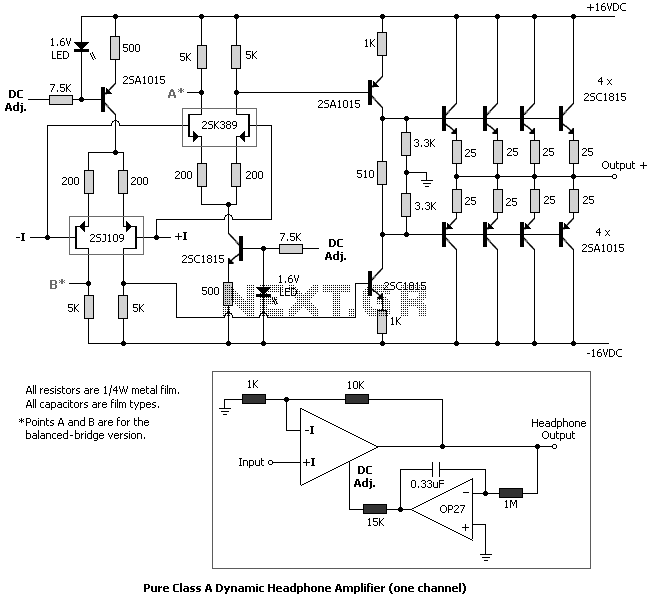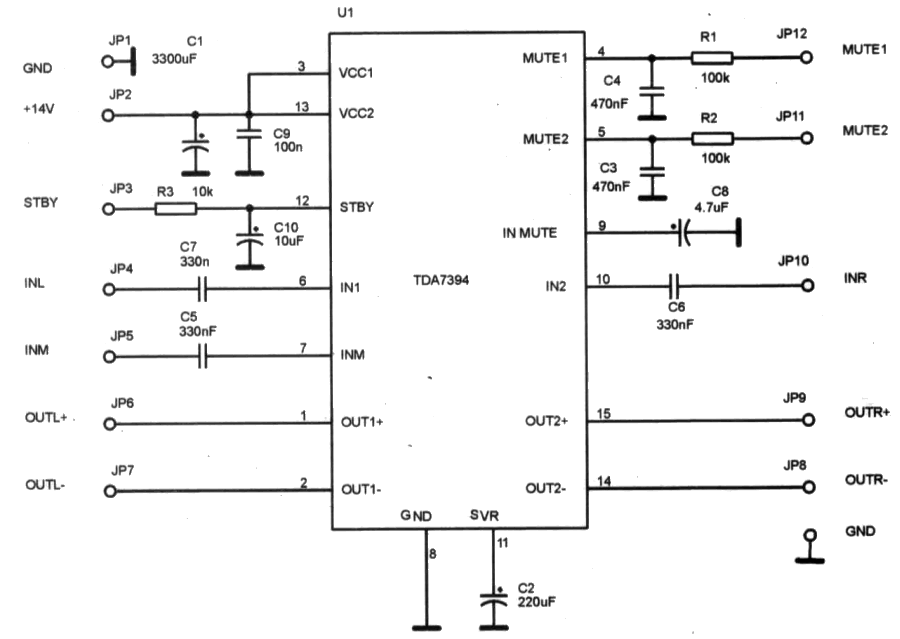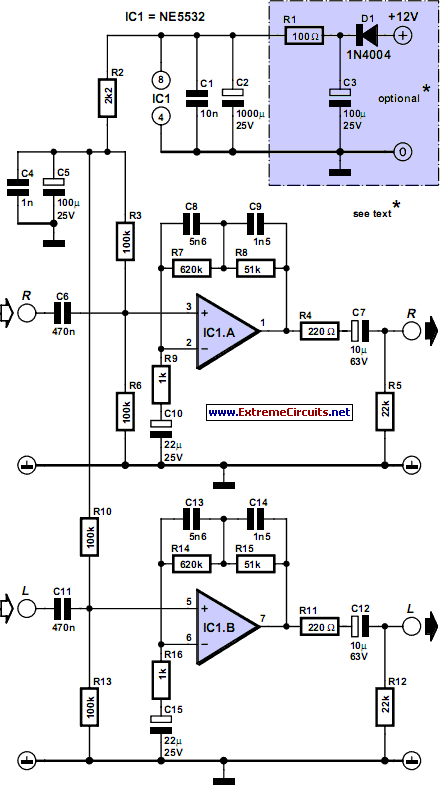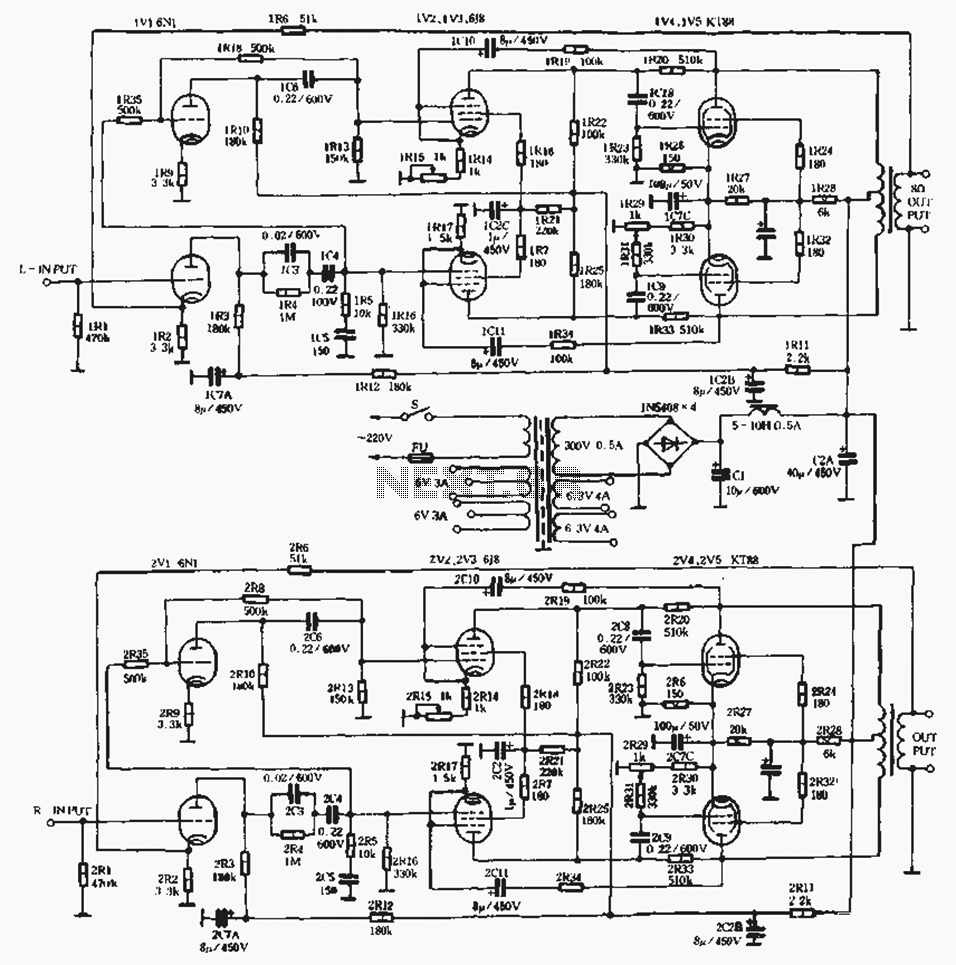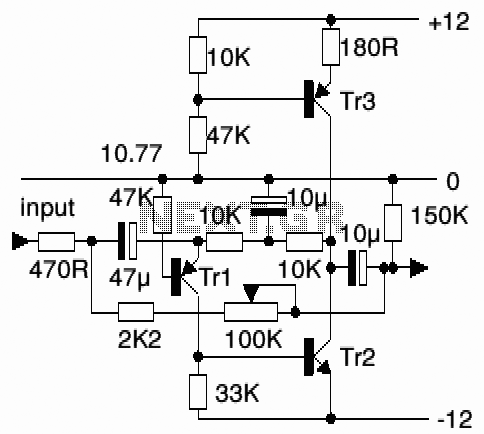
Fet cascode video amplifier
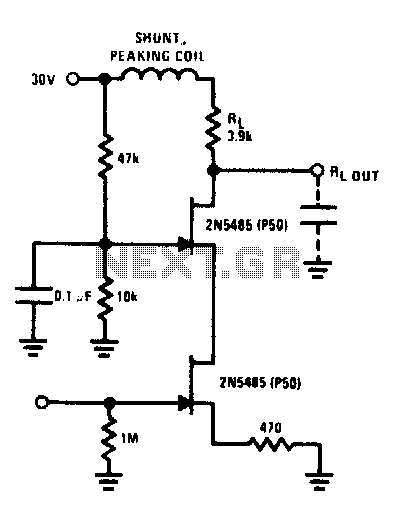
The FET cascode video amplifier exhibits very low input loading and minimizes feedback to nearly zero. The 2N5485 transistor is utilized due to its low capacitance and high transconductance (YfS). Additionally, the bandwidth of this amplifier is constrained by the load resistor (RL) and load capacitance.
The FET cascode video amplifier is designed to provide high performance in video signal amplification while maintaining low input loading characteristics. The use of the 2N5485 transistor is crucial, as it offers low gate-source capacitance, which is beneficial for high-frequency applications. This low capacitance allows for improved signal integrity and reduced distortion, making the amplifier suitable for video signals that require high fidelity.
The cascode configuration enhances the amplifier's performance by providing a high output impedance and minimizing the Miller effect, which can degrade bandwidth. The arrangement of the transistors in this configuration effectively reduces the feedback loop, resulting in a more stable gain and improved linearity.
The bandwidth of the amplifier is primarily determined by the load resistor (RL) and the load capacitance. The interaction between these components defines the frequency response of the amplifier. A higher load resistance can lead to a narrower bandwidth, while increased load capacitance can also limit the frequency range. Therefore, careful selection of these components is essential to optimize the amplifier's performance for specific applications.
Overall, this FET cascode video amplifier is an effective solution for applications requiring high-speed video signal processing with minimal distortion and low input loading characteristics.The FET cascode video amplifier features very low input loading and reduction of feedback to almost zero. The 2N5485 is used because of its low capacitance and high YfS Bandwidth of this amplifier is limited by RL and load capacitance.
The FET cascode video amplifier is designed to provide high performance in video signal amplification while maintaining low input loading characteristics. The use of the 2N5485 transistor is crucial, as it offers low gate-source capacitance, which is beneficial for high-frequency applications. This low capacitance allows for improved signal integrity and reduced distortion, making the amplifier suitable for video signals that require high fidelity.
The cascode configuration enhances the amplifier's performance by providing a high output impedance and minimizing the Miller effect, which can degrade bandwidth. The arrangement of the transistors in this configuration effectively reduces the feedback loop, resulting in a more stable gain and improved linearity.
The bandwidth of the amplifier is primarily determined by the load resistor (RL) and the load capacitance. The interaction between these components defines the frequency response of the amplifier. A higher load resistance can lead to a narrower bandwidth, while increased load capacitance can also limit the frequency range. Therefore, careful selection of these components is essential to optimize the amplifier's performance for specific applications.
Overall, this FET cascode video amplifier is an effective solution for applications requiring high-speed video signal processing with minimal distortion and low input loading characteristics.The FET cascode video amplifier features very low input loading and reduction of feedback to almost zero. The 2N5485 is used because of its low capacitance and high YfS Bandwidth of this amplifier is limited by RL and load capacitance.
